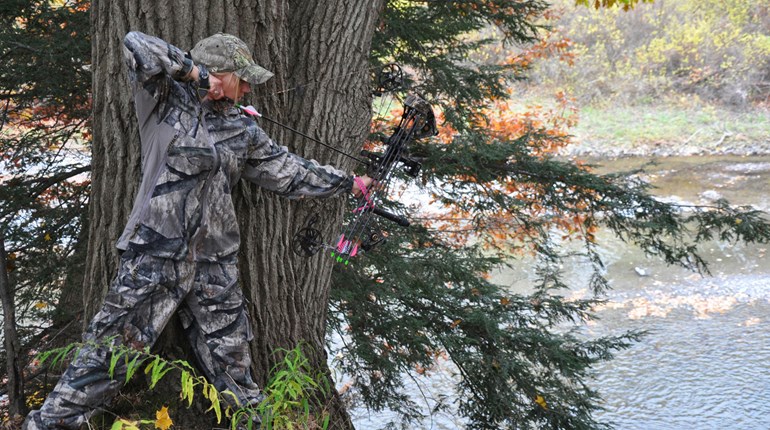
When faced with a threat, humans generally have one of three initial responses, which you’ve already heard of: Fight, flight or freeze. Each response has its pros and cons, and what works best will depend on the situation. You can train under stress to get better at reacting quickly and appropriately, but the response you fall into, at least at first, is often involuntary. And you might default to one response and then switch to another when you’ve had a couple of seconds to assess the situation, or if things change.
The one state you almost never want to stay in for long is the freeze response. Think of a rabbit in the presence of a fox—it freezes to try to avoid detection, but this seldom works for long, and the chase is soon on. In the case of criminal danger, the same will go for you—freezing is seldom the ultimate solution to the problem. Let your intuition guide you, but in almost every dangerous situation, you need to MOVE.
Whether you choose fight or flight after the initial freeze, moving will help you in at least three different ways. First, and most obvious, it helps you get farther away from the danger. This is useful for almost any kind of danger, from criminals to grizzly bears to oncoming trains to tornadoes. Second, moving makes you a smaller or more difficult target for the danger. And third, it serves you well in the legal aftermath if you made a clear effort to retreat rather than engage.
Reason to Move: Just Get Away
Increasing distance means increasing safety. If something has pinged your radar as a potential problem and flipped you into code orange, that’s your cue to increase the distance between you and whoever you’re keeping an eye on. At this stage, you don’t have to bolt or run screaming. Just casually walk away in a tangential direction while you keep your eye on the situation and gather more information. You might discover it’s not a threat after all—great. But if it is, you’ve gained distance that might keep you from going code red, and if it develops into an actual problem, you’ve already got a head start on running away.
Do not let a potential problem get close to you while you’re trying to figure out if it’s a real problem or not. Letting a bad actor walk right into attack range because you weren’t sure if if it was worth crossing the street or not is a terrible idea.
Pay attention, because moving while you’re in code orange can reveal a criminal’s intention. If you cross the street to get away from him and his crosses, too, or you change the direction you were walking and he begins to follow or change course to intercept you, that’s a red flag. It’s probably code red time.
Once there’s an active threat and you’re in full-on code red, your number one goal is to survive, and if running away is an option, take it. Remember that you should run toward safety, not just away from danger.
Reason to Move: Become a Troublesome Target
If you’re in or being set up for a criminal interview (and you might not know you are at first), leaving is a great way to fail it. A bad guy can’t attack you if he can’t get close, so keep moving away.
While retreating, you might find yourself in a better tactical position, such as behind good cover, that you didn’t have before. This is helpful if your retreat only gets you so far and things kick off into code red. Moving might also give you time to draw your gun as you head toward a more advantageous position.
Moreover, if you are under an actual attack, moving makes you much more difficult to deal with. If you’re being shot at, becoming a moving target makes you harder to hit (and so does additional distance). Moving while you are shooting back is difficult to do well, so practice it if you’ve got access to a range that allows it, or try 3-gun competition. If you can’t run away, physically fighting and flailing as much as you’re able makes you harder to control and just a pain in the butt for him to deal with. If he decides you’re too much trouble and gives up, you might not have physically overpowered him, but you’re still won.
Reason to Move: Legal Aftermath
Self-defense is legal; fighting isn’t. You might think fighting doesn’t really apply to women, but the legal definitions get hairy, especially with a person you know and with whom you’ve had a long-standing grievance—a rude neighbor, a bad coworker, a nasty ex-boyfriend. Andrew Branca writes in his excellent book, The Law of Self-Defense, “Genuine self-defense only happens when one party starts the fight against the wishes of the other.” The law is very particular about whether you participated in causing or escalating a conflict, and if you are ever forced to defend yourself with your concealed-carry firearm and claim self-defense afterward, you’ll need to prove that your actions were justified under the law.
Different states have different laws regarding what’s self-defense and what isn’t, and you need to know the laws in your state. Some states have what’s called a “duty to retreat,” which means you cannot legally use force to defend yourself unless you have first tried to leave the situation if there was a safe way for you to do so. Even if your state doesn’t require you to try to leave when possible, moving away from the situation if you’re able makes it very clear that you didn’t want to use force, but you had no choice. If there’s video evidence or eyewitnesses who saw you try to run away before you pulled your gun out and shot the guy when you couldn’t escape, your legal defense becomes considerably stronger. “If there are witnesses,” Branca writes, “your obvious efforts to retreat make you look like the innocent party and make your attacker look like the aggressor… if you are retreating, the question of whether you started the fight is answered by your act of retreating.”
One quick note about moving and self-defense: Once the threat has stopped, ensure that you are safe, but do not flee. This is not the time to run away. Get far enough away that you are safe and then immediately call the police. If you’ve used force to defend yourself, you want to get on record that you were running from danger, not running away from the scene or from the authorities.
The bottom line is simple: Of fight, flight or freeze, freeze is usually the most dangerous (at least if you stay in it). When you find yourself in danger, it’s time to move!














































